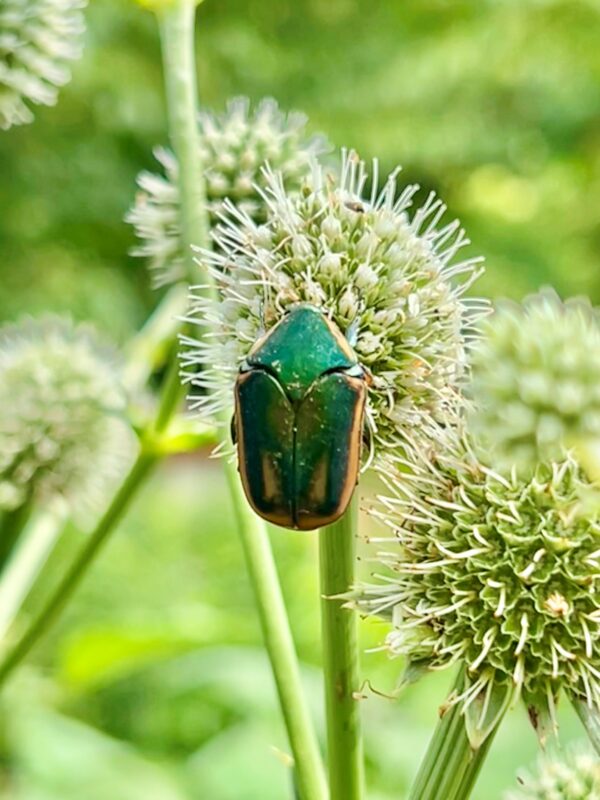The Pollinator Preserve
It is thrilling to see such a variety of activity in this light-filled garden as the insects navigate freely, no longer inhibited by any barriers. Your enthusiastic support, excitement, and encouragement are appreciated. We especially enjoy helping our visitors understand the interactions between plants and insects and between insects and other insects. Each season brings opportunities for learning and sharing, along with wondering what we might experience at each visit. Enjoy the photos scrolling above; you might find a plant or insect new to you, too.
Change occurs hourly in this garden; many of you visit at least weekly or more often with a camera in hand. This garden is enjoyed in the moment, but we find ourselves anticipating the changes to come. Each spring, we wait for the weather to warm, the rain to fall, and the plants to unfurl their leaves while growing taller and fuller. We wait for the flowers to burst into bloom, much to the delight of the bees, butterflies, and other pollinators. Often, these insects (and even birds) make their homes here — some on our plants, some in our soil, and others close by.
The gardens are bursting with life and color by August. The insects focus on the plants that sustain them and their young. The hummingbirds flit among their favorite blooms, and the goldfinches cannot resist the plump sunflower seeds. August is the month to appreciate the abundance of nectar-seeking insects, often three or four species at one time, on the phlox, mountain mint, and swamp milkweed.
In late summer, the asters and goldenrod change the palette to shades of blue, lavender, and gold, with pops of contrasting colors nearby. The rich nectar and heavy pollen fuel the insects as some prepare for their journey south while others pack on the calories to get through the winter right where they have spent their lives. Pollinators and caterpillars remain abundant, now joined by praying mantises and various beetles and flies. There are many insects that survive by consuming other insects, such as lady beetles hunting for aphids. Wasps come in search of grasshoppers, spiders and cicadas. Nature’s balance is no longer inhibited by the old netting, and opportunities to observe and learn are more abundant.
By October, the change is evident in the plants. We typically have a freeze by early November and put the gardens to rest for the winter. Most of the plant stems and the seed heads will remain through the winter, and a layer of leaves will blanket most of the soil, creating homes for the insects that survive the winter. The coming months give us time to reflect and plan while we anticipate another season at the Pollinator Preserve.
To read more about pollinator decline: https://xerces.org/pollinator-conservation/whats-at-stake
To learn what you can do to help https://xerces.org/bring-back-the-pollinators
Many thanks to PECO for their generous program support by funding education in the Pollinator Preserve and for providing a roving Garden Education Station.
We are grateful for the support of The Robert F. Schumann Foundation to fund our internship program at the Pollinator Preserve.
















